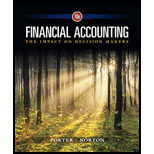
Concept explainers
Transaction Analysis and
Four brothers organized Beverly Entertainment Enterprises on October 1. The following transactions occurred during the first month of operations:
October 1: Received contributions of $10,000 from each of the four principal owners of the new business in exchange for shares of stock.
October 2: Purchased the Ace Theater for $125,000. The seller agreed to accept a down payment of $12,500 and a seven-year promissory note for the balance. The Ace property consists of land valued at $35,000, and a building valued at $90,000.
October 3: Purchased new seats for the theater at a cost of $5,000, paying $2,500 down and agreeing to pay the remainder in 60 days.
October 12: Purchased candy, popcorn, cups, and napkins for $3,700 on an open account. The company has 30 days to pay for the concession supplies.
October 13: Sold tickets for the opening-night movie for cash of $1,800 and took in $2,400 at the concession stand.
October 17: Rented out the theater to a local community group for $1,500. The community group is to pay one-half of the bill within five working days and has 30 days to pay the remainder.
October 23: Received 50% of the amount billed to the community group.
October 24: Sold movie tickets for cash of $2,000 and took in $2,800 at the concession stand.
October 26: The four brothers, acting on behalf of Beverly Entertainment, paid a dividend of $750 on the shares of stock owned by each of them, or $3,000 in total.
October 27: Paid $500 for utilities.
October 30: Paid wages and salaries of $2,400 total to the ushers, projectionist, concession stand workers, and maintenance crew.
October 31: Sold movie tickets for cash of $1,800 and took in $2,500 at the concession stand.
Required
- Prepare a table to summarize the preceding transactions as they affect the
accounting equation. Use the format in Exhibit 3-1. Identify each transaction with a date. - Record each transaction directly in T accounts using the dates preceding the transactions to identify them in the accounts. Each account involved in the problem needs a separate T account.
Want to see the full answer?
Check out a sample textbook solution
Chapter 3 Solutions
Financial Accounting: The Impact on Decision Makers
- Evergreen Corp. began the year with stockholders' equity of $350,000. During the year, the company recorded revenues of $500,000 and expenses of $320,000. The company also paid dividends of $30,000. What was Evergreen Corp.'s stockholders' equity at the end of the year?arrow_forwardEvergreen corp.'s stockholders' equity at the end of the yeararrow_forwardHarrison Corp. reported earnings per share (EPS) of $15 in 2022 and paid dividends of $4 per share. The current market price per share is $90, and the book value per share is $65. What is Harrison Corp.'s price- earnings ratio (P/E ratio)?arrow_forward
- Everest Manufacturing produces and sells a single product. The company has provided its contribution format income statement for March: • Sales (4,500 units): $135,000 • Variable expenses: $58,500 • Contribution margin: $76,500 • Fixed expenses: $50,000 • Net operating income: $26,500 If the company sells 5,200 units, what is the total contribution margin?arrow_forwardProvide solution with step by step calculationarrow_forwardWhat was the amount of net income for the year?arrow_forward
- What unit sales would be required to earn a target profit ofarrow_forwardEverest Ltd. wants to earn a pre-tax income of $75,000. The company has total fixed costs of $150,000, and the contribution margin per unit is $10.00. How many units must be sold to earn the targeted pre-tax income?arrow_forwardWhat is the total contribution marginarrow_forward
 College Accounting, Chapters 1-27AccountingISBN:9781337794756Author:HEINTZ, James A.Publisher:Cengage Learning,
College Accounting, Chapters 1-27AccountingISBN:9781337794756Author:HEINTZ, James A.Publisher:Cengage Learning, Financial Accounting: The Impact on Decision Make...AccountingISBN:9781305654174Author:Gary A. Porter, Curtis L. NortonPublisher:Cengage Learning
Financial Accounting: The Impact on Decision Make...AccountingISBN:9781305654174Author:Gary A. Porter, Curtis L. NortonPublisher:Cengage Learning Intermediate Accounting: Reporting And AnalysisAccountingISBN:9781337788281Author:James M. Wahlen, Jefferson P. Jones, Donald PagachPublisher:Cengage Learning
Intermediate Accounting: Reporting And AnalysisAccountingISBN:9781337788281Author:James M. Wahlen, Jefferson P. Jones, Donald PagachPublisher:Cengage Learning


